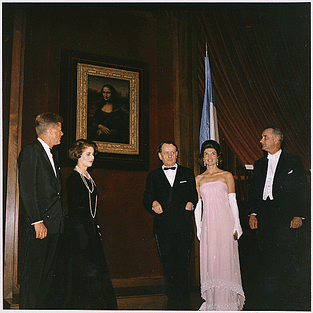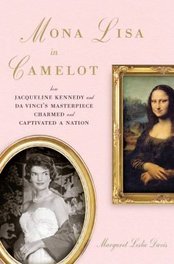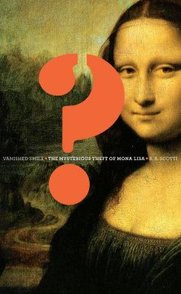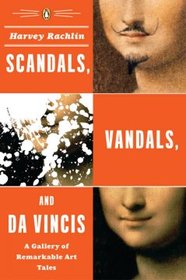 The unveiling: LBJ is particularly entranced January 13th marks the 50th anniversary of Mona Lisa's famous debut in the United States. Her unveiling at the National Gallery of Art in Washington, D.C. was reminiscent of a coronation, presided over by triumphant First Lady Jacqueline Kennedy, who had been instrumental in negotiations with the French government to send the priceless painting on its first overseas trip. Using her considerable powers of persuasion (and her knack for speaking French), she convinced France's Minister of Culture, Andre Malraux, that an artistic exchange of this magnitude would strengthen the cultural ties between the nations. French President Charles de Gaulle, who was looking to cement his stature on the international political scene during the cold-war years, saw it from a different perspective. He wanted to develop a nuclear arsenal and needed the tacit support of the American government to do it. If the mysterious, come-hither smile of a 450 year old woman could seal the deal, well, son sac dans le coffre et l'envoyer sur l'océan. To read more about the adventures of the first lady of art, you don't have to cross the seas. Just venture to your local library for these entertaining reads:  Mona Lisa in Camelot Davis, Margaret L. (Da Capo Press, 2008) The author details the story of the 1963 American exhibition of the Mona Lisa in New York City and Washington, D.C. It was America's first blockbuster art show and the populace was gripped by "Mona mania." It's all here: the negotiations, preparations, flummoxes (the painting wound up being poorly lit in D.C.) and successes of the exhibit, along with plenty of inside dope on Jackie's phenomenal wardrobe.  Vanished Smile: the mysterious theft of the Mona Lisa Scotti, R. A. (Knopf, 2009) This is a spritely account of the brazen 1911 theft of the Mona Lisa from the Louvre and the two-year quest to bring her home. On the morning of August 22, La Joconde was found missing from the Salon Carré. Even with help of renowned French criminologist Alphonse Bertillon, the trail was cold from the start. Rumors abounded about greedy, wealthy American collectors and the Louvre’s lax security. No one in Paris was above suspicion, not even the young Pablo Picasso. While the portrait was finally recovered in Florence in 1913, its theft apparently the result of a young Italian’s misguided patriotism, the author reminds readers that the mystery is far from over. The true motive for the theft—and the possible connection to a larger ring of art thieves—remains unknown.  Scandals, vandals and DaVincis: a gallery of remarkable art tales Rachlin, Harvey (Penguin, 2007) For a mix of art gossip and intrigue, here's light-hearted but occasionally riveting account of the backstories of 26 famous paintings, beginning with the Mona Lisa. The author takes a close-up look at the secret histories of these masterpieces, including Gilbert Stuart's Athenaeum Head of George Washington, the world's most reproduced image (on the $1 bill). He describes how they came to be created and how they survived forgery, revolution, burglary, vandalism, ransoms, scandal, religious turmoil, and shipwrecks to become to some of the world's most priceless works of art.
0 Comments
August 6th marks the 67th anniversary of the destruction of the city of Hiroshima, Japan with the first use of an atomic weapon. Thinking men and women should spend some time investigating the back story of this event and its role in shaping the world as we know it.  The Making of the Atomic Bomb Richard Rhodes (Simon & Schuster, 1986) This is the definitive work on the subject. Yes, it's long (over 800 pages) and not an easy read, but Rhodes writes in a gripping style and delivers facinating psychological insights into the personalities of the men behind the Manhattan Project. Rhodes covers it all: the theoretical origins of the bomb in the mind of Leo Szilard, the lab experiments spearheaded by Enrico Fermi and his crew of scientists at the University of Chicago, the building of the prototype, the test at Alamagordo, New Mexico, the training of the B-29 crews assigned to deliver the first two bombs and the missions themselves. He also delves into the struggle in Nazi Germany and Imperial Japan to make the first bomb, as well as the political and military events that led to the destruction of the Japanese cities of Hiroshima and Nagasaki. Well worth the time and effort.  Pandora's Keepers: nine men and the atomic bomb Brian VanDeMark (Little, Brown, 2003) VanDeMark puts his focus on the nine men who built the atomic bomb and how each struggled with the implications of their deadly creation. He does an excellent job of bringing these brilliant scientists to life in this examination of the moral ambiguity that exists in "an imperfect world that sometimes forges good from evil and evil from good." First, we witness science at work, in the act of creation that drove these talented individuals. However, then VanDeMark switches gears and tackles the issues of the aftermath, when the scientists, academics all, realized the real-world horrors and implications for the future that their creation had wrought. Pandora indeed.  Shockwave: countdown to Hiroshima Stephen Walker (Harper Collins, 2005) This high-speed rollercoaster ride of a narrative recreates a (literally) minute-by-minute retelling of the Hiroshima bombing as remembered by American soldiers, Los Alamos scientists, and Japanese survivors. He examines the doubts and fears of the bomb's designers, the thought processes behind the selection of the targets, and the bewilderment of citizens of Hiroshima, who were victims not only of the U.S. bomb, but a Japanese government controlled by men who were determined to continue the fight at all costs. |
AuthorTo find out more about me, click on the Not Your Average Jo tab. Archives
February 2024
Categories
All
|

 RSS Feed
RSS Feed